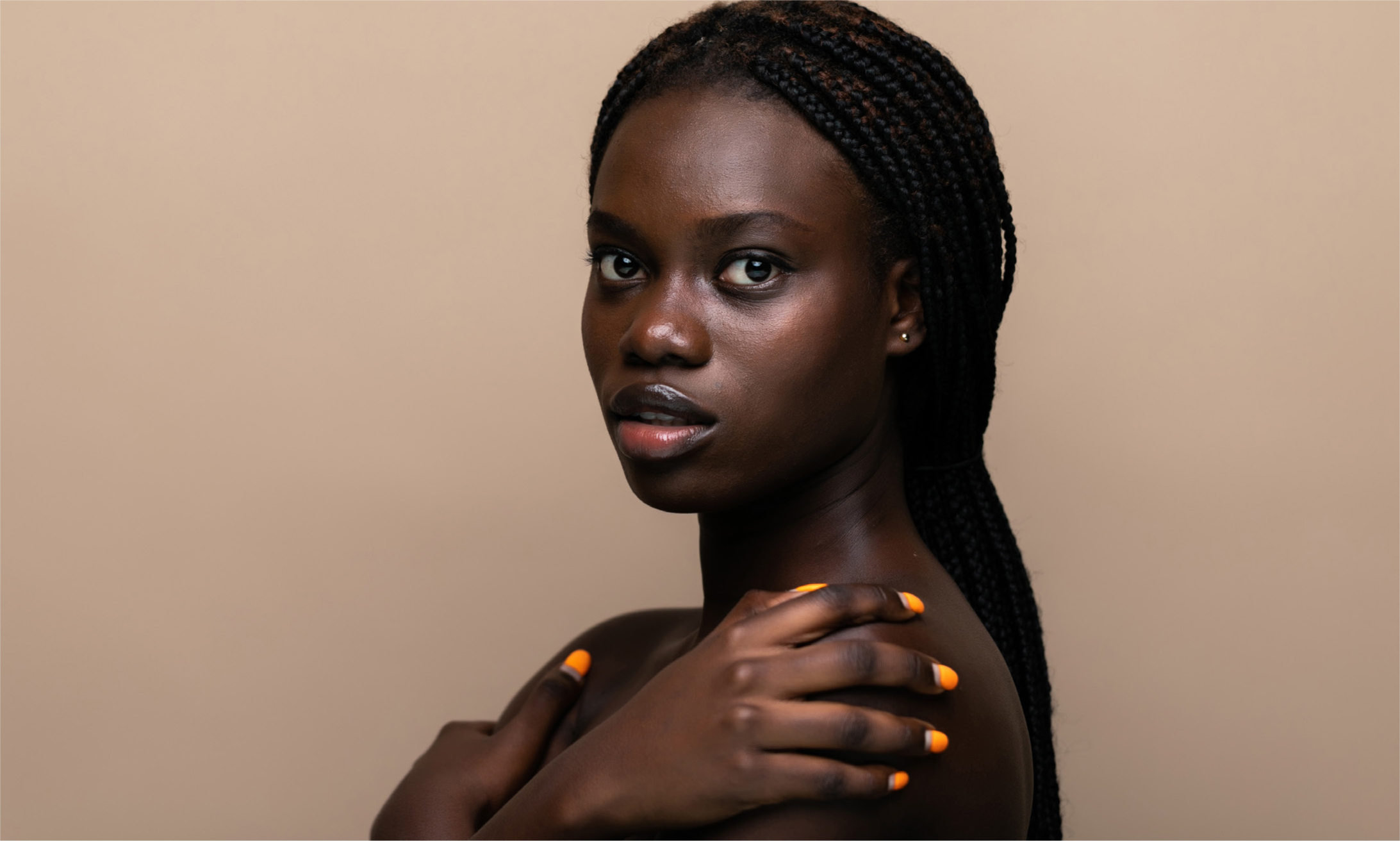
In an age of easy global travel and increasingly diverse populations, it is crucial for practitioners to understand the varying needs of different ethnic demographics and also to be able to offer services that successfully treat patients' skincare concerns.
Africa is the fastest growing region and, together with Asia, it will account for over 80% of the world population (Khokhar and Kashiwase, 2015). This means that the worldwide white population is falling, and in the UK this is confirmed by the last census in 2011, which showed that the white British population had fallen in the preceding ten years by 7%, whereas BAME and mixed ethnicity demographic is on the increase (Gov.co.uk, 2018).
With this expected growth in diversity comes the opportunity for aesthetic practitioners to strengthen their service provision by ensuring their understanding of skin of colour is strong and up to date, as well as appreciating the factors that are important to the populations they treat (Talakoub and Wesley, 2009).
A survey by Black Skin Directory (2017) revealed that 92% of skin of colour respondents felt it was a challenge to find skincare practitioners to care for their skin complaints and concerns. Additionally, 68% attached importance to service from a practitioner of similar ethnic background. A 2018 study showed that health outcomes were significantly improved when the patient and caregiver were of the same racial background due to the perceived trust and empathy (Alsan et al, 2018).
Knowledge and empathy were seen as factors that drive down this disparity, and this further illustrates the point that aesthetic practitioners today need to ensure they are equipped with the right skills and knowledge to serve as wide a patient group as possible, regardless of their own ethnic background. The ability to serve a wide population is not only a mark of a progressive practitioner, but it also has a positive impact on the bottom line.
In this article, the author will discuss the physiological differences between black and white skin, cultural myths and misconceptions within the black demographic, typical skincare concerns of skin of colour patients and possible treatment options, as well as signposting useful ingredients in the treatment of concerns highlighted.
Key differences between black and white skin
Melanocyte activity
Skin pigmentation is a complex process; however, despite there being a variety of skin colour and tone, the amount of melanocytes among different ethnic groups is largely the same. Yet, the key determinant when it comes to skin colour is the amount and type of melanin pigment that the melanocytes actually produce (Démarchez, 2011).
Black skin has more melanin than white skin (Brenner and Hearing, 2008). In fact, some studies have shown that black skin produces twice as much melanin as white skin and they are more evenly distributed with the epidermis (Vashi et al, 2016). Research also indicates the melanocyte cells in black skin are significantly larger and more active than they are in white skin. It is noted that chronological degradation of the melanosomes in darker skin tones is slower.
 Studies have produced evidence that black skin may produce twice as much melanin as white skin, as well as being more evenly distributed in the epidermis
Studies have produced evidence that black skin may produce twice as much melanin as white skin, as well as being more evenly distributed in the epidermis
Together the combination of increased melanin content and the pattern of dispersion confers black skin some protection from premature ageing induced by UV radiation from the sun. On average, research points to an approximate natural sun protection factor (SPF) of 13.4 in black skin, compared to 3.3 in white skin (Gupta et al, 2016).
Increased melanin levels in black skin also make it more vulnerable than white skin to discolouration - be in loss of colour (hypopigmentation) or patchy uneven deposits of colour (hyper-pigmentation).
Trans-epidermal water loss
Another point of difference between black and white skin the rate of trans-epidermal water loss (TEWL). A key function of the skin act as a barrier preventing water loss through the stratum corneum to the environment (Boer et al, 2016).
Studies show that while black skin has on average a higher sebum content and a more compact stratum corneum of approximately twenty cell layers compared to sixteen in white skin (La Ruche and Cesarini, 1992), it also has lower ceramide levels so it loses more water than white skin (Wan et al, 2014) and this contributes to increased xerosis of the skin and the increased likelihood of black skin experiencing dry, flaky and ashy skin conditions, especially in cold weather (Feng and Hawkins, 2011).
Cultural considerations
A practitioner aware of how differences in culture impacts their relationship and interaction with their patient is likely to have more successful outcomes (Kennedy et al, 2017). This also involves understanding how cultural myths and misconceptions influence your patient.
Black don't crack!
One of the biggest myths that exist within the black community concerns the use of sunscreen from the protection of UVA/UVB rays which damage and prematurely age the skin (Battie et al, 2013). With black skin having increased and more evenly distributed melanin providing a base level of protection coupled with the historical lack of education, health messaging, brand advertising and poor product formulation, the skin of colour population has tended to assume that sunscreen is irrelevant and/or avoided its use.
» With hyperpigmentation as a key concern, Retinoids, Nicotinaminde and Ascorbic Acid are powerful ingredients that deliver increased cell proliferation, exfoliation of the stratum corneum, reduction of TEWL, redevelopment of collagen and brightening of the complexion «
Given that the mortality rate for skin cancer is higher in the black community due to the later diagnosis it is important for practitioners of all backgrounds to understand and dispel this myth; and educate about skin cancer vigilance in a skincare setting (Gupta et al, 2016).
Skin bleaching
In some sections of the African and Asian communities there is the cultural belief that a lighter skin tone is more attractive and will amass more positive attention, better employment and wealth – lighter skin is seen as the embodiment of beauty (Hunter, 2011). In order to achieve the desired complexion various creams, ointments, soaps, capsules/pills, and injections that have high levels of mercury, hydroquinone, hydrogen peroxide, glutathione and corticosteroids may be used. These products aren't regulated and are almost always sold illegally.
Statistics compiled by the World Health Organisation in 2011 showed that 40% of African women bleach their skin. In some countries the figure is higher: a staggering 77% of women in Nigeria, 59% in Togo, 35% in South Africa, 27% in Senegal and 25% in Mali use skin-lightening products (Rao, 2019).
In 2017, the Asia-Pacific region accounted for half of global sales of skin bleaching products—an estimated $7.5 billion. China accounted for approximately 40% of the sales, with Japan at 21% and Korea at 18% (Liu, 2018).
Common skin of colour concerns
Skin of colour patients may present with any number of complaints, but the most frequent are detailed below.
Dyschromia
Dyschromia encompasses hypopigmentation and hyperpigmentation of all types and is characterised either by the loss of skin pigment or an increase in the concentration of melanin in areas of the skin (Kang et al, 2014). Both create uneven and patchy skin tones that are cosmetically undesirable, with the former even creating deep social stigma and psychological trauma to the patient. In some parts of the world, sufferers of the hypo pigmentary skin disorder Vitiligo are often isolated from their communities and unable to fully participate in their societies (Pichaimuthu et al, 2011; Grimes and Miller, 2018).
Within a cosmetic clinic setting, hyperpigmentation is often presented as a key concern. Multiple studies indicate that hyperpigmentation is significantly more common in darker skin than Caucasian skin tones. As far back as 1983, hyper-pigmentary concerns have consistently ranked highest in the skin of colour population (Davis and Callender, 2010). Though, it is important to note that hyperpigmentation itself is not a diagnosis, rather it is the outcome of a primary skin condition.
The causes of hyperpigmentation vary from acne, UV damage, hormonal contraception, pregnancy, skin disease such as eczema or psoriasis, sickness e.g. Lupus and medication e.g. antimalarial tablets, injury to the skin such as cuts and burns, the use of aggressive treatments and harsh products (Cestari et al, 2014).
Melasma
Melasma is present in all racial groupings, but even more so in within the skin of colour demographic and affects women more than men (Grimes et al, 2019). It is a common acquired disorder of light to dark brown hyperpigmentation that presents on the face in a symmetrical pattern across the forehead, cheeks, chin, upper lip and nose (Sarkar et al, 2014).
The main contributory factors are hormonal influences, pregnancy and intense ultraviolet radiation exposure. There also appears to be a genetic component and research also indicates correlation with thyroid disease (Basit et al, 2020). Treating melasma is challenging due to the high relapse rate (Kang and Ortonne, 2010), though pregnancy induced melasma tends to self-resolve post pregnancy (Bolanca et al, 2008).
Pseudofolliculitis barbae
Pseudofolliculitis barbae (PFB) is an inflammatory condition of the skin resulting in the development of painful papules and pustules caused by coarse and tightly curled Afro hair, curling back and penetrating into the skin (Ogunbiyi, 2019). It is especially common after hair has been cut and has sharp ends, causing an inflammatory reaction which can worsen if infection is present. The main association is with black men, though increasing cases are being witnessed in the black female population, especially if PCOS is present (Nguyen et al, 2014).
 Skin of colour patients may present at clinics with concerns ranging from melasma or dyschromia to dermatosis papulosa nigra
Skin of colour patients may present at clinics with concerns ranging from melasma or dyschromia to dermatosis papulosa nigra
Although it is commonly referred to as razor bumps (assumption being it is caused by shaving) it is also associated with other hair removal methods such as waxing or sugaring which is a popular hair removal method in Middle Eastern cultures (Torres, 2019). As well as occurring on the face, PFB can also present on the pubic area (e.g. bikini line, legs and underarms).
Dermatosis papulosa nigra
Dermatosis papulosa nigra (DPN) are small but fleshy and firm hyper-pigmented or skin coloured papules commonly found on individuals of African and Asian descent, usually on the face and neck. They can be flat against the skin or protrude, varying in size from one to five millimetres (Xiao and Ettefagh, 2019).
Though benign, they can be cosmetically undesirable, especially as DPN tends to often increase with age and become a concern when the papules start connecting, thus forming masses atop the skin (Niang et al, 2007).
Keloids result from abnormal wound healing following skin trauma or inflammation and the highest incidences are within the skin of colour demographic (Mari et al, 2016). Research indicates the primary pathway as overactive fibroblasts producing high amounts of collagen, cytokines and growth factor post injury, extending over and above the initial trauma site. This is very different to hypertrophic scarring (Gauglitz et al, 2011). Keloids are firm, fleshy, often appearing as rubbery nodules that cause pain, itching and burning sensations (McGinty and Siddiqui, 2020).
Treatments for skin of colour
Most treatments are suitable for skin of colour patients; however due to the increased risk of depigmentation and post inflammatory hyperpigmentation modifications to the preparation process, device settings, treatment potency and duration may be necessary (Alexis, 2013). Research favours combination treatment modalities to achieve the best skin rejuvenation results (Guss et al, 2016).
- Chemical peels using Alpha Hydroxy Acids, Beta Hydroxy Acid or Vitamin A perform well on all skin tones and are satisfactory peeling agents on dark skin to treat acne vulgaris, pigmentation, melasma, pseudofolliculitis barbae and resurface textural irregularities. Strength must be adjusted with darker skin tones favouring a series of superficial peels than one off deep skin peels (Salam et al, 2013).
- Micro-needling is noted as being safe and effective on darker skin tones (Cohen and Elbuluk, 2016). The action creates micro punctures in the skin which stimulate the healing mechanism treating scarring, acne, pigmentation and skin laxity safely (Singh and Yadav, 2016).
- Though previously contraindicated for darker skin, technological advances have made laser treatments a safe and effective modality for treating of skin of colour patients (Battle, 2011). With the introduction of longer wavelengths, longer pulse duration and more efficient cooling devices lasers are particularly suited to tackling hyperpigmentation and stimulating collagen in the dermis. The ND Yag is cited as the safest for skin of colour (Roberts et al, 2019).
 Possessing a deep understanding of the problems that skin of colour patients may present with allows and inspires trust in the practitioner
Possessing a deep understanding of the problems that skin of colour patients may present with allows and inspires trust in the practitioner
The treatment options for DPN range from electrosurgery, cryotherapy, cutterage to laser (Garcia et al, 2010). Hyperpigmentation is noted as being a common adverse reaction (Garcia et al, 2010), so the need for great care in DPN removal is high. Practitioners must be qualified and experienced (Lupo, 2007).
Keloids pose the most challenging condition to treat as successful options are limited and research indicates that there are no definitive treatment protocols as the reoccurrence rate is high, regardless of therapy (Juckett and Hartman-Adams, 2009). Surgery, laser, steroids, cryotherapy, silicone pressure sheets and radiation are amongst the many treatment and management options (Ogawa et al, 2016). Prevention is viewed as the optimal treatment (Viera et al, 2011).
Key ingredients for skin of colour
Like treatment options, key ingredients are used for the management of skin conditions are suitable for skin of colour patients.
With hyperpigmentation as a key concern, retinoids, nicotinaminde and ascorbic acid are powerful ingredients that deliver increased cell proliferation, exfoliation of the stratum corneum, reduction of TEWL, redevelopment of collagen and brightening of the complexion through the fading of melanin discolouration (Sarkar et al, 2013).
Furthermore, Tyrosinase Inhibiting ingredients currently in use, such as Liquorice Extract, Kojic Acid, Transexamic Acid, Cysteamine, Alpha Arburtin, Hydroquinone, N-acetyl glucosamine, are helpful in the management of pigmentation complaints in skin of colour (Davis and Callender, 2010). These ingredients contribute to the breakdown of melanin clumps and reduce the outward appearance of discolouration.
Hydroxy Acids are also safe ingredients for skin of colour patients, for both their keralytic and humectant capabilities (Kornhauser et al, 2012). Amongst many, Alpha Hydroxy Acids such as Glycolic, Lactic and Mandelic are primary exfoliators whereas Salicylic Acid is effective in the management of Acne Vulgaris due to it lipophilic nature and action in the pilo-sebaceous unit. Poly Hydroxy and Bionic Acids such as Gluconolactone, Maltobionic and Lactobionic Acid are renowned for their ability to fortify the skin barrier function and reduce sensitivities (Green et al, 2009).
Naturally, there are concerns about the adverse effects of overuse of any ingredient, so with the propensity of dark skin to hyperpigmentation, care and caution must be exercised, alongside prescribing the use of adequate sun protection.
Conclusion
Clearly, while there are similarities in the skin among various ethnic demographics, there are some differences that warrant a practitioner to have an increased awareness of not only the practical needs of black skin, but also of cultural aspects, such as skin bleaching and low use of sunscreen, as these factor impact treatment choice and success rates.
Understanding the types of concerns that are prevalent in the skin of colour demographic and the potential treatment solutions allows the practitioner to provide an elevated level of service that inspires trust and confidence in the patient.
Furthermore, an appreciation of how all these factors intersect and impact the provision of skincare in a diverse and multicultural society is key in ensuring safety, protecting patient goodwill and increasing clinical profits.
Key points
- The non-white population is rising. According to the last census, the UK white population fell by 7% and the BAME population rose by 5% (ONS, 2011)
- Knowledge and awareness of skincare concerns presented by the skin of colour population are noted as key factors for successful interactions and treatments
- Melanocyte activity and skin barrier function are noted as key physiological differences in black skin
- Cultural factors, such as skin bleaching and low use of sunscreen, are important considerations
- Dyschromia is ranked as the top concern in the skin of colour population and tyrosinase Inhibitors, AHAs and retinoids are useful ingredients in for tackling pigmentary issues
- Treatments such as chemical peeling, micro-needling and laser are safe and well tolerated in darker skin when used with care and caution.
CPD reflective questions
- What impact does ethnicity have on a black and minority ethnic patient's attitude to skincare concerns?
- Why should practitioners exercise care and show empathy to cultural practices such as skin bleaching?
- Why is it important to quell the sunscreen myth in the black community?



